MUNIC C4DGL3GV6 Telematics embedded system User Manual
Mobile Devices Ingenierie Telematics embedded system
MUNIC >
User manual
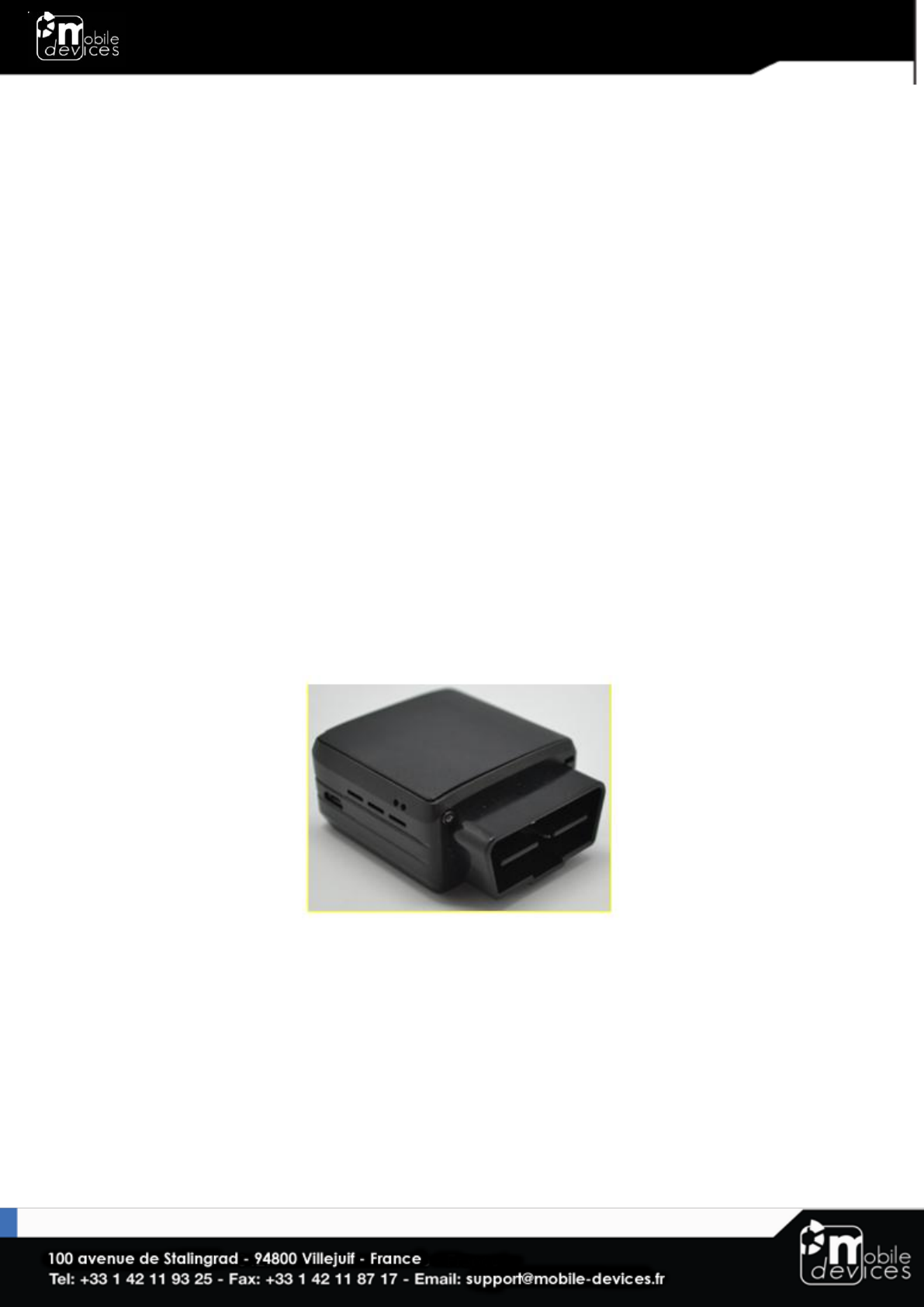
C4DONGLE-3GNAV6
INSTALLATION GUIDE
V 1.1
06/12/2016

Table of contents
Preface ....................................................................................................................................... 3
Warnings and notices ............................................................................................................... 3
1. Hardware features ................................................................................................................. 4
2. Hardware description ........................................................................................................... 5
2.1. External view ................................................................................................................... 5
2.2. Internal view ................................................................................................................... 5
2.3 OBD connector pin out .................................................................................................. 5
2.4 OBD adapter wires ......................................................................................................... 6
3. Preparing/installing the device ............................................................................................ 7
3.1. Open the device to insert a SIM card ........................................................................... 7
3.2. Properly close the device .............................................................................................. 8
3.3. Install the OBD Dongle ................................................................................................ 10
4. LED sequences .................................................................................................................... 10
5. Support ................................................................................................................................ 10
6. FCC Regulations: ................................................................................................................. 10
7. FCC RF Exposure Information (SAR).................................................................................. 11
8. ISED Notice .......................................................................................................................... 11
9. ISED Radiation Exposure Statement ................................................................................. 12
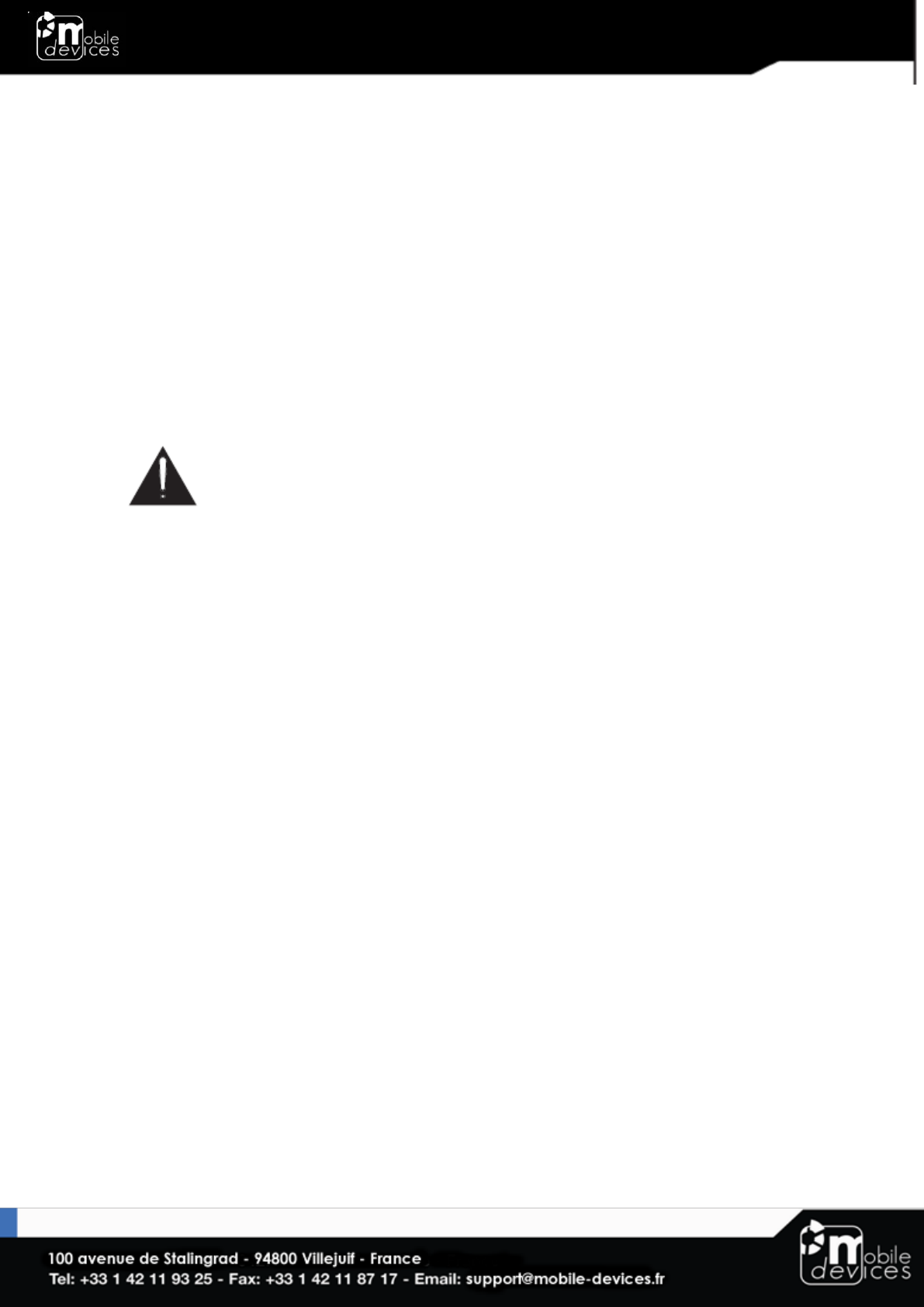
Preface
The information contained in this installation guide is subject to changes in order to improve the
reliability, design or features without prior notice. Mobile Devices Ingénierie reserves the right to make
changes in the content without obligation to notify any person or organisation of such changes or
improvements. Mobile Devices Ingénierie can in no event be held liable for technical or editorial errors or
omissions herein, nor for incidental, special or consequential damages from the furnishing, performance
or use of this installation guide.
Please contact our technical support for current updates and supplemental information concerning the
use and operation of this or other Mobile Devices Ingénierie products.
Warnings and notices
The exclamation point within an equilateral triangle is intended to alert the user to the
presence of important operating and maintenance (servicing) instructions in the literature
accompanying the product.
Please read the installation guidelines, as well as the safety and operating instructions before operating
your device. Follow all instructions and heed all warnings in the installation guide.
There is a risk of explosion if the battery is replaced by a wrong battery type. Please discard empty battery
according to local regulations.
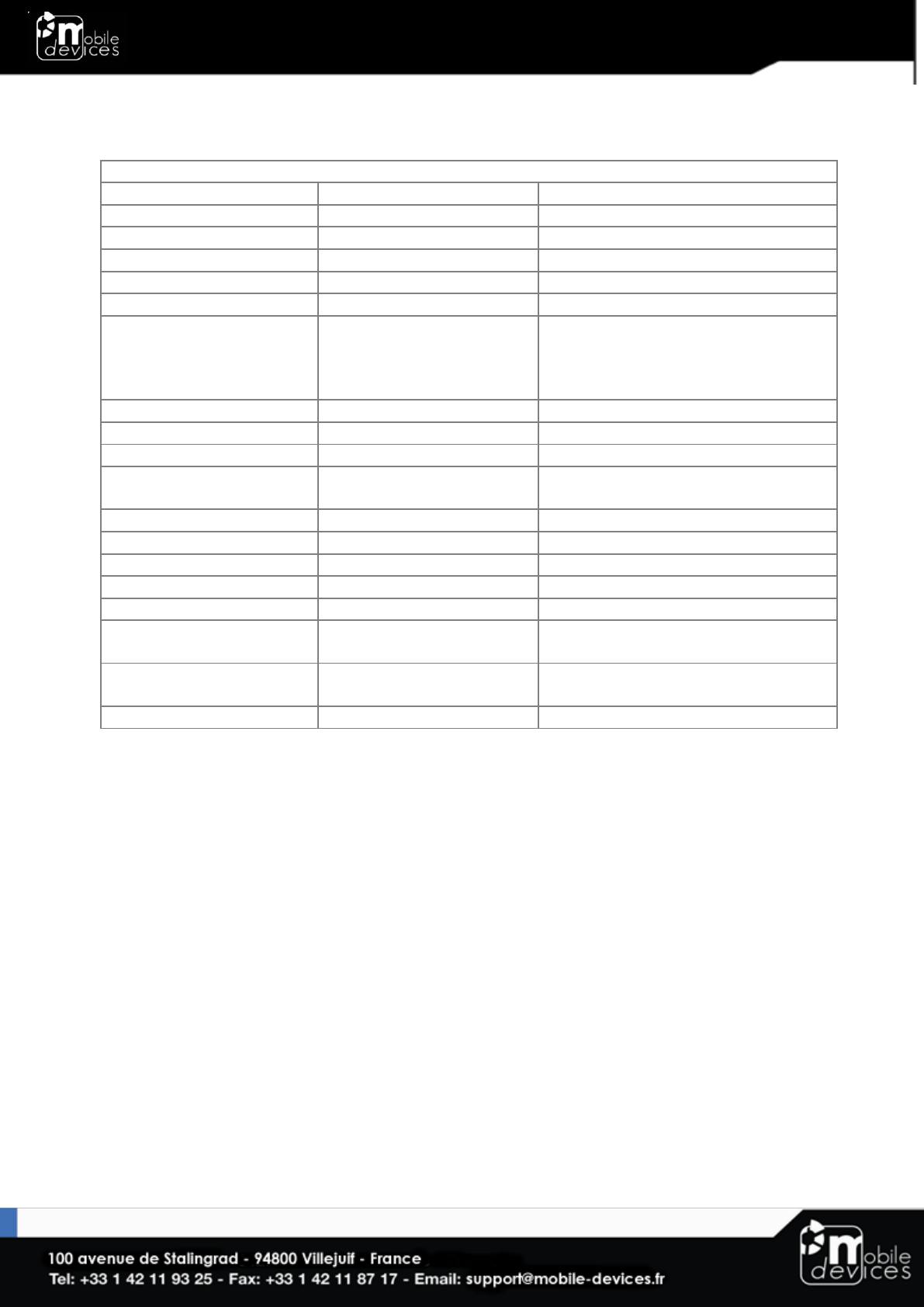
1. Hardware features
OBD Dongle
Performance
Processor
Atmel - 500MHz
RAM
128 Mbytes
NAND Flash
256 Mbytes
Power supply
External power supply 8-32V
●
External voltage measurement
●
Li-pol battery
450mA.h
Communication
Modem
3G US Data module (u-blox SARA-U260)
GSM 850, PCS 1900
3G WCDMA FDD B2, B5
GSM antenna
Internal
Positioning
GPS receiver
u-blox UBX-M8030-KT-B3000A
GPS antenna
Internal
Interface & Telematics
features
(Micro) USB (2.0 Host)
powered (limited to 500 mA on 5V)
optional
3D Accelerometer
±2g, ±4g, ±8g
3 axis Gyroscope
Please contact us
LED
1 (controlled by software)
Environmental
Connectors
OBD connector
Micro USB (Engineering use only)
Operating temperature *
-25/+55°C with battery
-25/+60°C without battery
Dimensions
With OBD connector: 27x60,5x49,5 mm
Without OBD connector: 27x48x49,5 mm"
SIM card
Slot
OBD messaging protocols could be provided as an option (not included in standard catalogue)
* Please read warnings section at the beginning of the installation guide
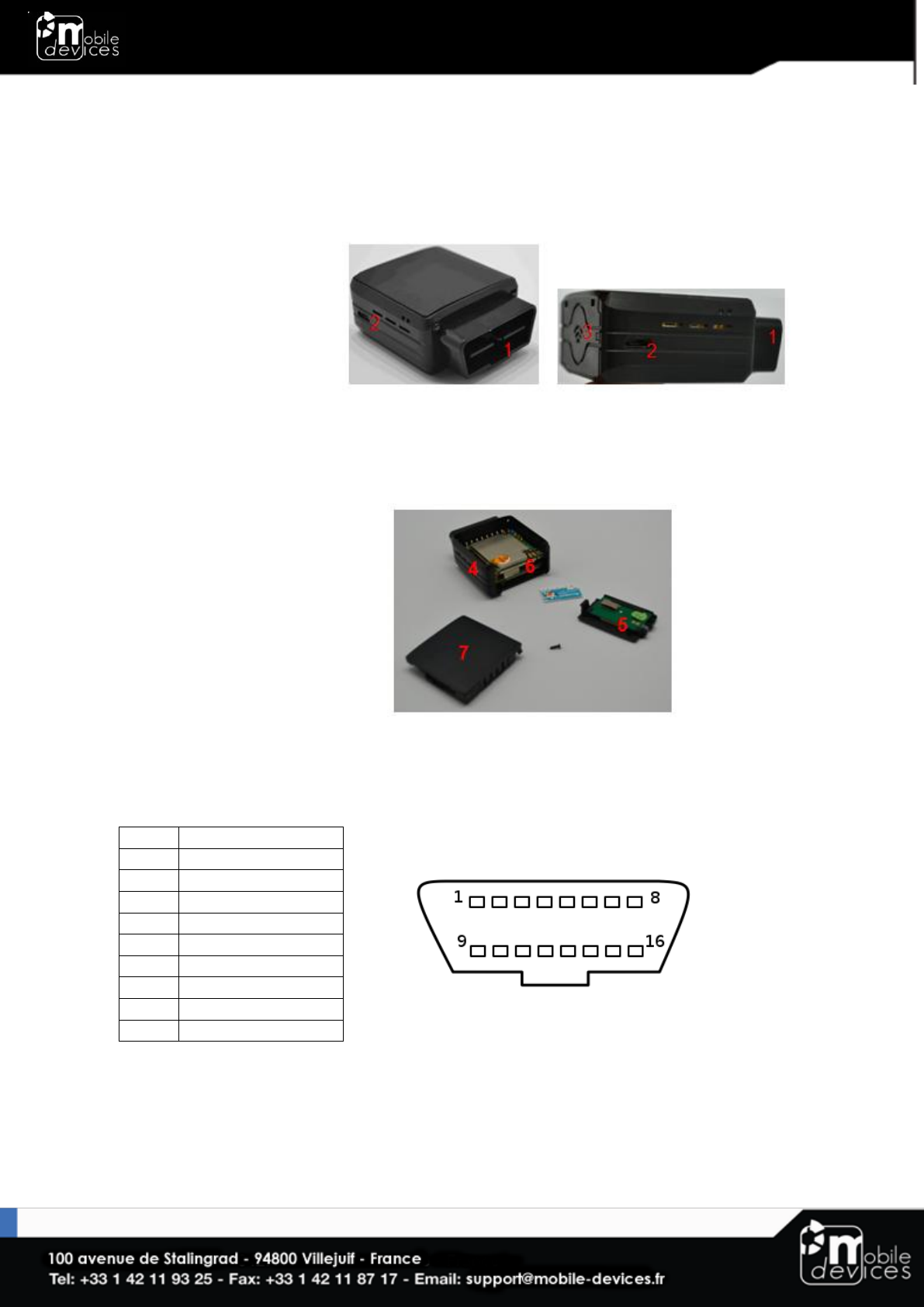
2. Hardware description
2.1. External view
1. ODB connector
2. microUSB connector
3. LED
2.2. Internal view
4. GSM antenna
5. GPS antenna
6. SIM holder
7. Internal battery*
2.3 OBD connector pin out
Pin #
Comment
2
J1850+ (PWM/VPW)
4
Chassis ground
5
Signal ground
6
CAN High
7
K line
10
J1850- (PWM)
14
CAN low
15
L line
16
Battery voltage
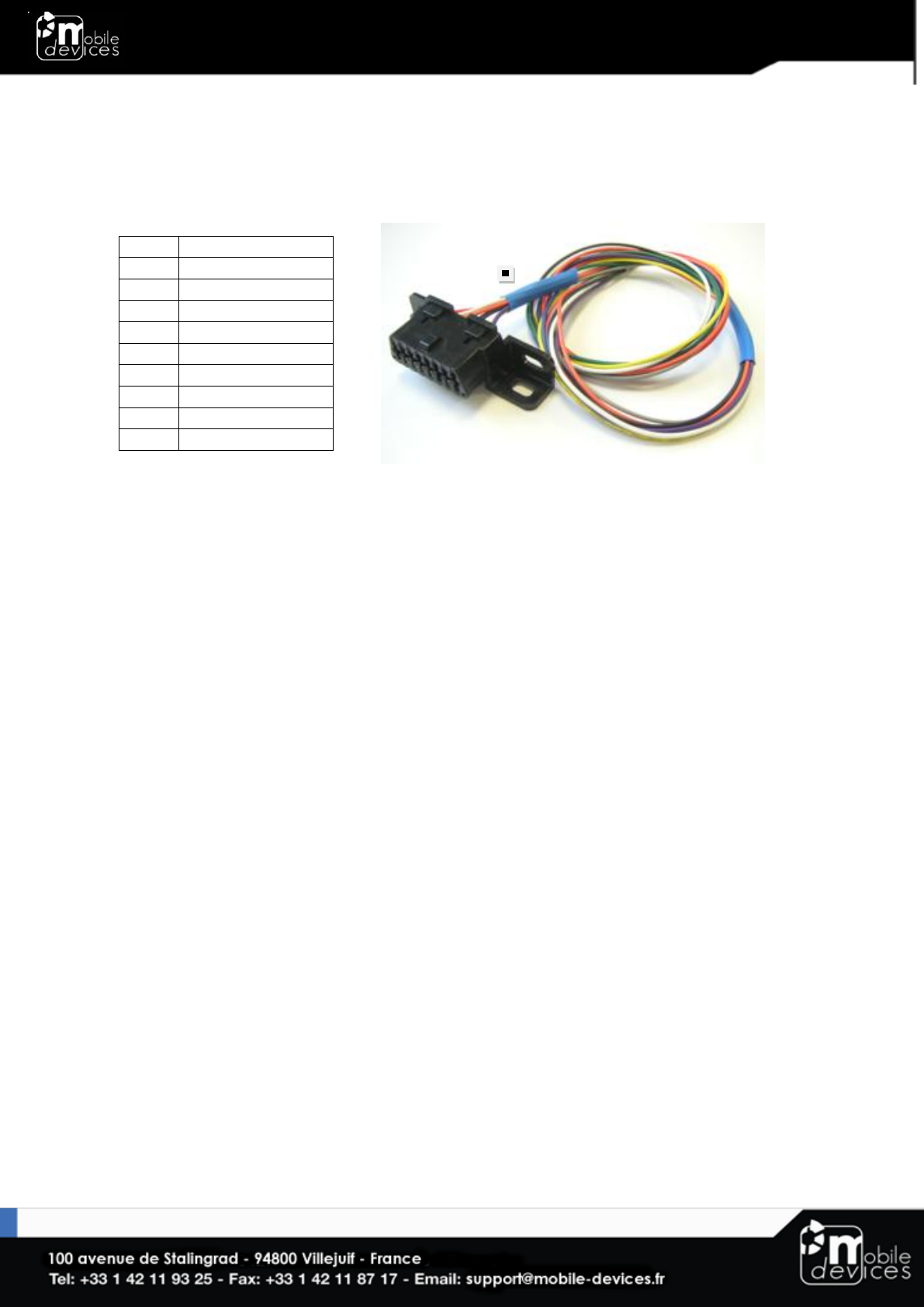
* Please read warnings section at the beginning of the installation guide
2.4 OBD adapter wires
This adapter is only used to connect the OBD to a computer (laptop/desktop).
Pin #
Wire color
2
Yellow
4
Black
5
Grey
6
Green
7
Blue
10
Violet
14
Orange
15
White
16
Red
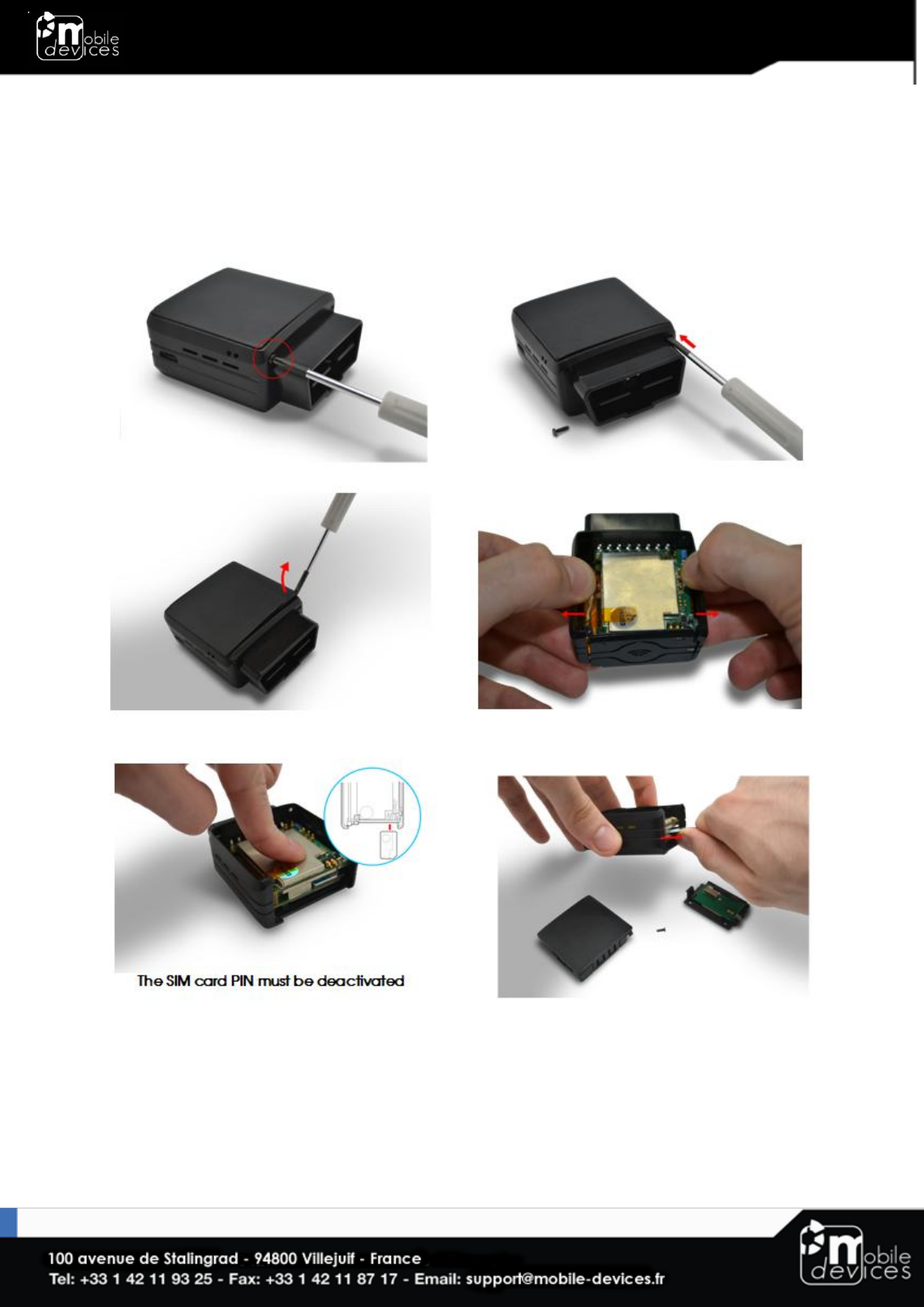
3. Preparing/installing the device
3.1. Open the device to insert a SIM card
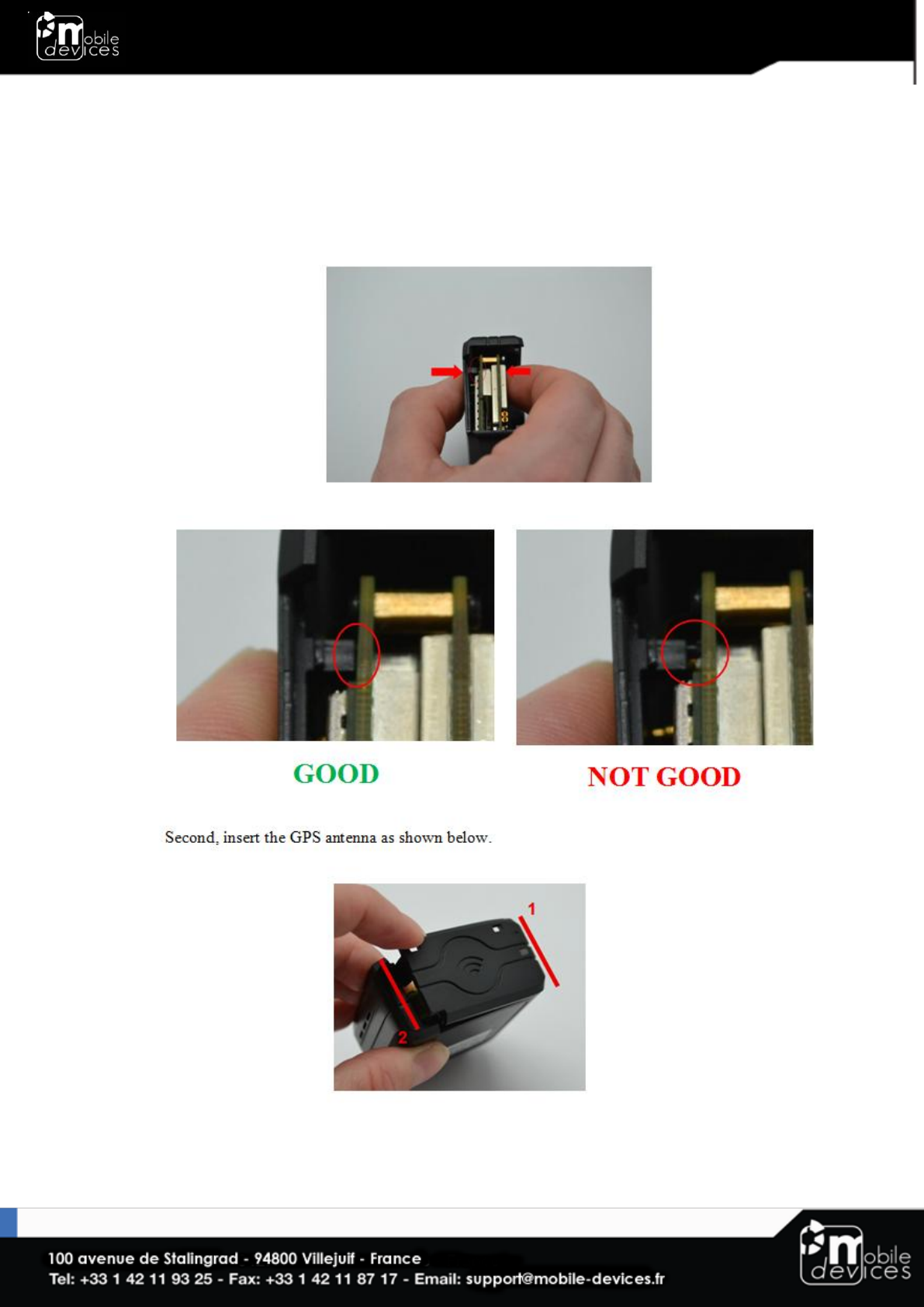
3.2. Properly close the device
First, check that the hole of the electronic card is correctly inserted in the plastic part.
If it’s not inserted proceed as shown below.
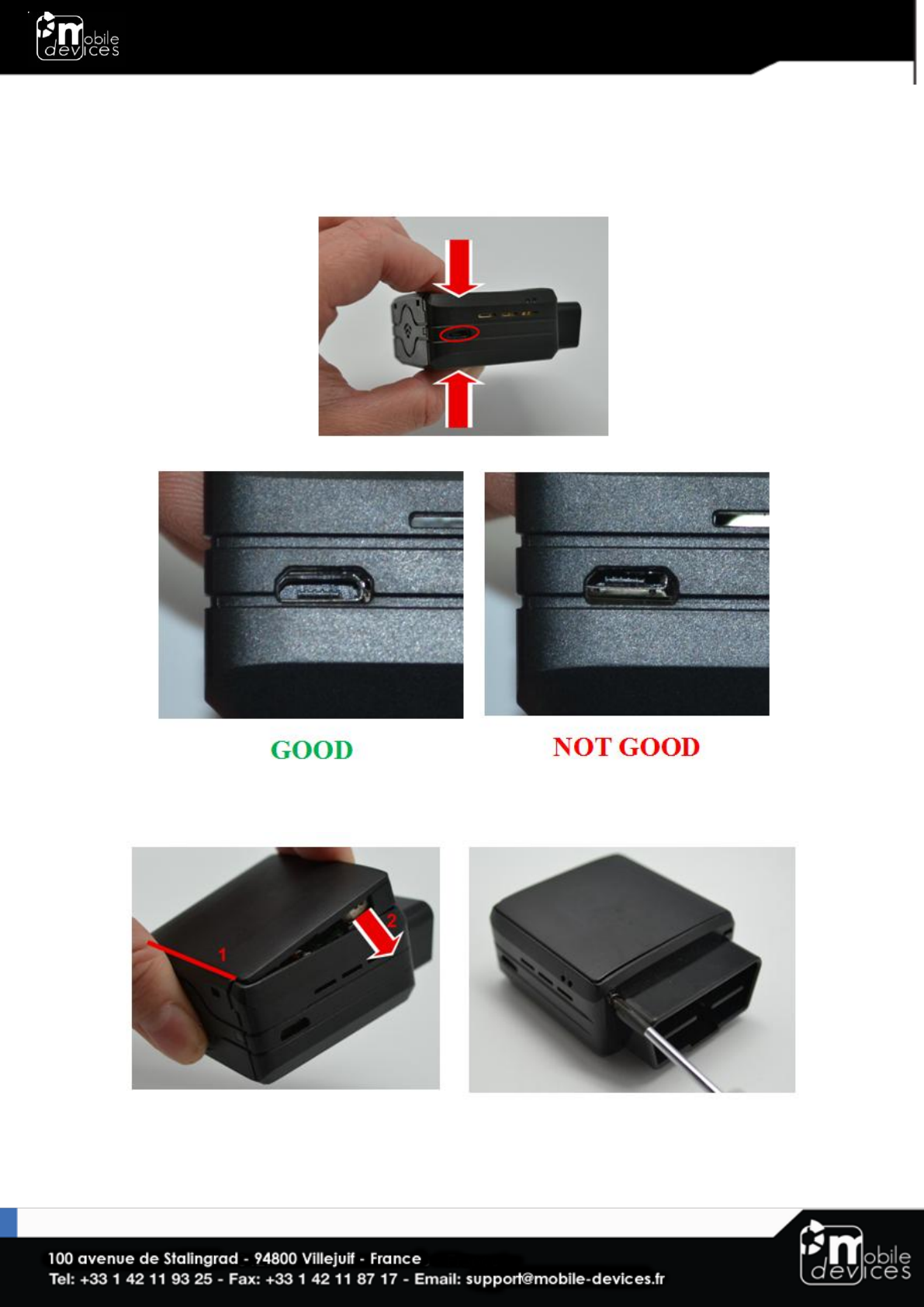
Third, check that the micro USB port is correctly inserted on its place.
If it’s not inserted proceed as shown below.
Finally, insert the battery and place the screw.
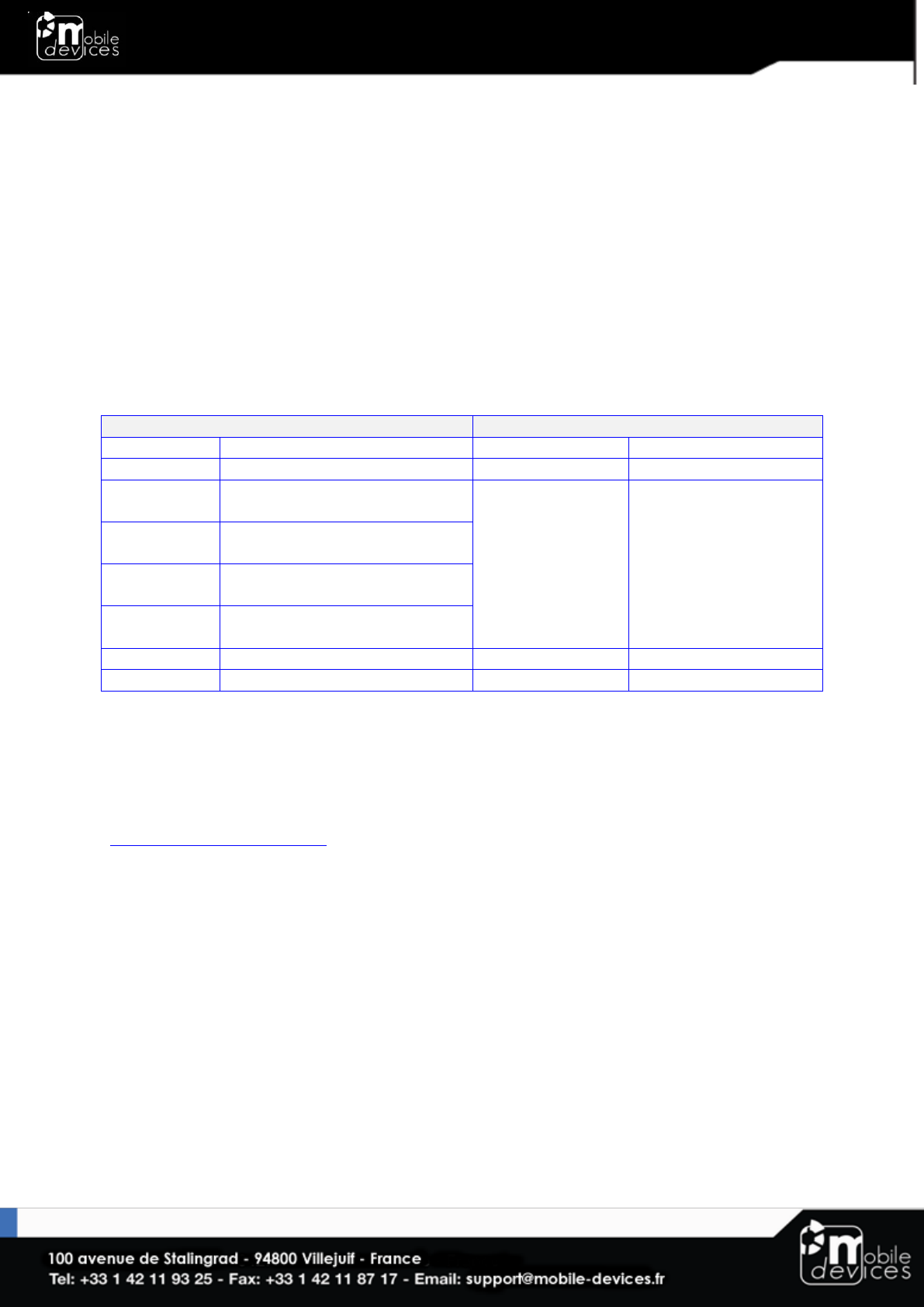
3.3. Install the OBD Dongle
Connect the OBD Dongle on your vehicle OBD connector.
4. LED sequences
The Dongle has a two-coloured LED, green and red.
When both colours are brightened, you can see an orange light.
Green LED
Red LED
Sequence
Meaning
Sequence
Meaning
Dongle OFF
OFF
No GPRS/No
GPS
3 times (50ms ON/100ms OFF)
3550ms OFF
Ext. Power/Run
ON
No GPRS/Fix
GPS
2 times (50ms ON/100ms OFF)
3700ms OFF
GPRS OK/No
GPS
1 time (50ms ON/100ms OFF)
3850ms OFF
GPRS OK/Fix
GPS
2000ms ON
2000ms OFF
Shutdown/Hibernate
30ms ON / 1 s OFF
Idle/Sleep
30ms ON / 1 s OFF
5. Support
For all questions not related in this installation guide, please contact the support team by email at
support@mobile-devices.fr
6. FCC Regulations:
This device complies with part 15 of the FCC Rules. Operation is subject to the following two conditions:
(1) This device may not cause harmful interference, and (2) this device must accept any interference
received, including interference that may cause undesired operation.
This device has been tested and found to comply with the limits for a Class B digital device, pursuant to
Part 15 of the FCC Rules. These limits are designed to provide reasonable protection against harmful
interference in a residential installation. This equipment generates, uses and can radiated radio frequency
energy and, if not installed and used in accordance with the instructions, may cause harmful interference
to radio communications. However, there is no guarantee that interference will not occur in a particular
installation If this equipment does cause harmful interference to radio or television reception, which can
be determined by turning the equipment off and on, the user is encouraged to try to correct the
interference by one or more of the following measures:

-Reorient or relocate the receiving antenna.
-Increase the separation between the equipment and receiver.
-Connect the equipment into an outlet on a circuit different from that to which the receiver is connected.
-Consult the dealer or an experienced radio/TV technician for help.
Caution: Changes or modifications not expressly approved by the party responsible for compliance could
void the user‘s authority to operate the equipment.
7. FCC RF Exposure Information (SAR)
This device is designed and manufactured not to exceed the emission limits for exposure to radio
frequency (RF) energy set by the Federal Communications Commission of the United States.
During SAR testing, this device is set to transmit at its highest certified power level in all tested frequency
bands, and placed in positions that simulate RF exposure in usage near the body with the separation of 15
mm. Although the SAR is determined at the highest certified power level, the actual SAR level of the while
operating can be well below the maximum value. This is because the device is designed to operate at
multiple power levels so as to use only the power required to reach the network. In general, the closer
you are to a wireless base station antenna, the lower the power output.
The exposure standard for wireless employs a unit of measurement known as the Specific Absorption
Rate, or SAR. The SAR limit set by the FCC is 1.6W/kg.
The FCC has granted an Equipment Authorization for this model device with all reported SAR levels
evaluated as in compliance with the FCC RF exposure guidelines. SAR information on this model device is
on file with the FCC and can be found under the Display Grant section of www.fcc.gov/oet/ea/fccid after
searching on FCC ID: A6G-C4DGL3GV6.
For this device, the highest reported SAR value for usage near the body is 1.46 W/kg.
While there may be differences between the SAR levels of various devices and at various positions, they
all meet the government requirement.
SAR compliance for body operation is based on a separation distance of 15 mm between the unit and the
human body.
8. ISED Notice
This device complies with Innovation, Science and Economic Development Canada license-exempt RSS
standard(s). Operation is subject to the following two conditions:
(1) this device may not cause interference, and
(2) this device must accept any interference, including interference that may cause undesired operation of
the device.
Le présent appareil est conforme aux CNR Innovation, Sciences et Développement économique Canada
applicables aux appareils radio exempts de licence. L'exploitation est autorisée aux deux conditions
suivantes:
(1) l'appareil ne doit pas produire de brouillage, et
(2) l'utilisateur de l'appareil doit accepter tout brouillage radioélectrique subi, même si le brouillage est
susceptible d'en
This Class B digital apparatus complies with Canadian ICES-003.

Cet appareil numérique de la classe B est conforme à la norme NMB-003 du Canada.
IC: 20253-C4DGL3GV6
9. ISED Radiation Exposure Statement
This device is compliance with SAR for general population/uncontrolled exposure limits in ISED RSS-102
and had been tested in accordance with the measurement methods and procedures specified in IEEE
1528 and IEC 62209. This equipment should be installed and operated with minimum distance 1.5 cm
between the radiator and your body. This device and its antenna(s) must not be co-located or operating
in conjunction with any other antenna or transmitter.
Cet appareil est conforme aux limites d'exposition DAS incontrôlée pour la population générale de la
norme CNR-102 d'Industrie Canada et a été testé en conformité avec les méthodes de mesure et
procédures spécifiées dans IEEE 1528 et IEC 62209. Cet appareil doit être installé et utilisé avec une
distance minimale de 1.5 cm entre l’émetteur et votre corps. Cet appareil et sa ou ses antennes ne
doivent pas être co-localisés ou fonctionner en conjonction avec tout autre antenne ou transmetteur.